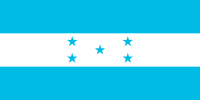 List of Insurance Companies Logos and Names in Honduras – World Insurance Companies Logos. Insurance Company List. By clicking on the logos of each insurer, you can find up-to-date details about the various types of coverage policies you need.
List of Insurance Companies Logos and Names in Honduras – World Insurance Companies Logos. Insurance Company List. By clicking on the logos of each insurer, you can find up-to-date details about the various types of coverage policies you need.
List of Insurance Companies Logos and Names in Honduras
List of Insurance Companies Logos and Names in Honduras. Clicking on Logos insurers gives you instant access to up-to-date information on insurance matters that can help you in the task of choosing the best insurance, and also, obtain telephone numbers, addresses, and prices, which insurers offer on the Internet.
- All
LAFISE
Read MoreSeguros Atlantida
Read MoreMAPFRE ASISTENCIA
Read MorePan American Life Insurance Company
Pan-American Life Insurance Group offers life, health, and accident insurance in the USA, including individual health plans, life insurance, and personal accident coverage
Read MoreDAVIVIENDA Seguros
Read MoreAON Expertise in Risk Capital and Human Capital.
Aon offers various insurance products in the USA, including professional liability, D&O liability, business owners policies, network risk, general liability, life, disability, health, auto, homeowners, and specialty coverage.
Read MoreFind more logos and names of insurance companies in the Central America, America page.
Noticias Today
Insurance Company Names
HSBC Seguros.
PAN AMERICAN LIFE INSURANCE COMPANY.
INTERAMERICANA DE SEGUROS, S.A.
AMERICAN HOME ASSURANCE COMPANY.
SEGUROS CONTINENTAL, S.A.
SEGUROS ATLÁNTIDA, S.A.
SEGUROS CREFISA, S.A.
EQUIDAD COMPAÑÍA DE SEGUROS, S.A.
SEGUROS DEL PAÍS, S.A.
MAPFRE SEGUROS.
SEGUROS CUSCATLÁN S.A.
SEGUROS LAFISE S.A.
From CNBS
The economy of Honduras
The country’s international reserve position continued to be strong in 2000, at slightly over $1 billion. Remittances from Hondurans living abroad (mostly in the U.S.) rose 28% to $410 million in 2000. The Lempira (currency) was devaluing for many years, but stabilized at L19 to the US dollar in 2005. The Honduran people are among the poorest in Latin America; Gross national income per capita (2007) is $US 1,649; the average for Central America is $US 6,736.
Honduras is the fourth poorest country in the Western Hemisphere; only Haiti, Nicaragua, and Guyana are poorer. Utilizing alternative statistical measurements in addition to the Gross Domestic Product can provide greater context for the nation’s poverty.
The economy of Honduras is based mostly on agriculture, which accounts for 14% of its gross domestic product (GDP) in 2013. A leading export coffee ($340 million) accounted for 22% of total Honduran export revenues. Bananas, formerly the country’s second-largest export until being virtually wiped out by 1998’s Hurricane Mitch, recovered in 2000 to 57% of pre-Mitch levels. Cultivated shrimp is another important export sector. Since the late 1970s, towns in the north have begun industrial production through maquiladoras, especially in San Pedro Sula and Puerto Cortés.
Honduras received significant debt relief in the aftermath of Hurricane Mitch, including the suspension bilateral debt service payments and bilateral debt reduction by the Paris Club—including the U.S. — Worth over $400 million. In July 2000, Honduras reached its decision point under the Heavily Indebted Poor Countries Initiative (HIPC), qualifying the country interim multilateral debt relief.
Lack of resources, lack of arable land, and a small domestic market continues to impede economic progress in Honduras. Most significantly, Honduras lacks abundant natural resources; only land appears to be plentiful and readily exploitable. But the presence of apparently extensive land is misleading because the nation’s rugged, mountainous terrain restricts large-scale agricultural production to narrow strips on the coasts and to a few fertile valleys.
Honduras’s manufacturing sector has not yet developed beyond simple textile and agricultural processing industries and assembly operations. The small domestic market and competition from more industrially advanced countries in the region have inhibited more complex industrialization
From Wikipedia
Honduras, Central America – World Insurance Companies Logos.

